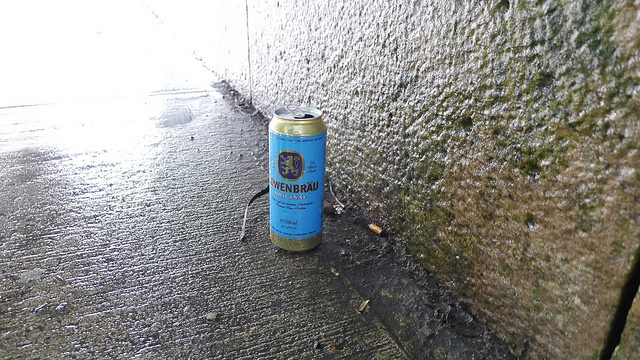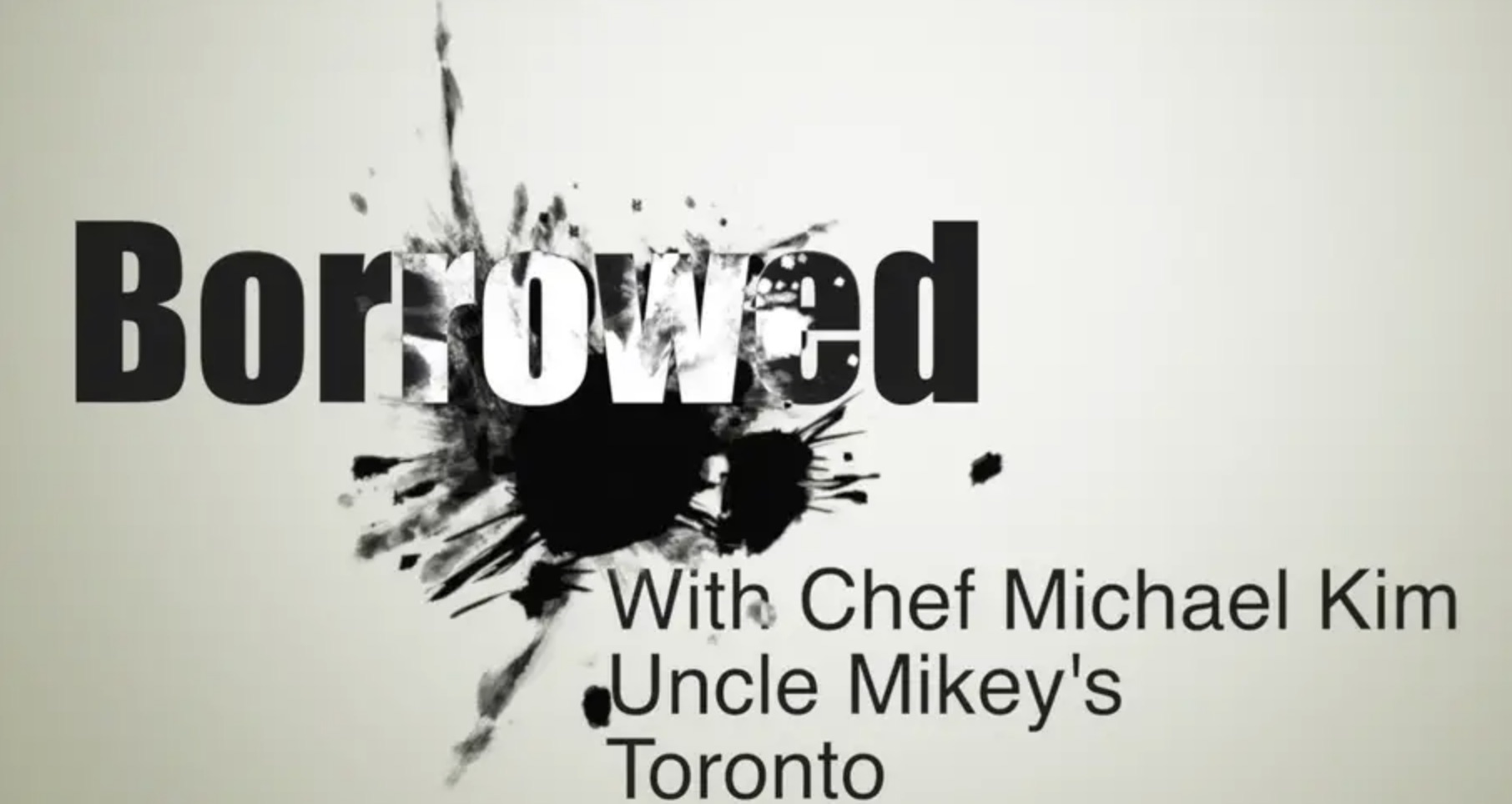By Jamie Drummond
“Here’s to good friends; tonight is kind of special,
The beer we’ll pour, must say something more, somehow,
So tonight, tonight, let it be Löwenbräu”– Vintage Löwenbräu Advertising Jingle circa 1965
Just the other week whilst working on an article and supping on a glass of my favoured “Go To” beer, I began to wonder just how much Löwenbräu I had consumed over my years upon this earth.
The results were most interesting and, considering my sizable long-term investment in the brand, surely deserves an all expenses-paid trip to visit the Munich brewery at the very least?
I have enjoyed Löwenbräu since the age of 15, but in order to keep everything kind-of above board we’ll say that I began my consumption at the age of 18.
A very conservative evaluation of my weekly consumption would be somewhere in the region of 12 Löwenbräu almost each and every week.
With 52 weeks in any given year this would mean 52 x 12 = 624 Cans Per Year
So, at 40 years old, and 22 years of enjoying Löwenbräu this would mean 624 x 22 = 13,728 Cans over the course of my 22 years.
At a current cost of approximately $2.25 a can we are looking at an outlay of 13,728 x $2.25 = $30,888 invested in the liquids of Löwenbräu.
For the sake of this exercise we will be looking at the 500ml can of Löwenbräu (although over the years I have downed a fair number of draught pours) and so 13,728 x 500ml = 6,864,000 ml or 6,864 litres.
Rather than going through the rigmarole of measuring the water my body displaced from a rusty oil drum I chose to use the following method of calculating my body’s volume:
“The density of the human body is very close to that of water–that’s why most of us (depending on fat content) sink when we exhale and float when we inhale. Muscle weighs about 1.06 g/ml, and fat is .9 g/ml. And we are made mostly of water. So it’s pretty accurate to say that a 95 kg person has a volume of 95 liters. It’s probably accurate within 5% or so.” – From an online geek forum, posted by a character who went by the moniker of “Alan Thee Dominator“
I weigh (on a good day) 176 lbs, which is the equivalent of 79.832 257 kilograms… which I’ll round up to 80 kg and hence, using the aforementioned calculation, have a volume of 80 litres.
Taking my volumetric consumption of 6,864 litres and dividing by my body volume/weight, 6,864 litres ÷ 80 l/kg = 85.8
And so over the course of my life I can say with some confidence that I have consumed 85.8 times my own (current) body volume and weight in beer brewed by Löwenbräu.
Oh, and when it comes to calories a 500ml can (or 17 Fluid Ounces) contains 233.75 of them.
So that means I have ingested 233.75 x 13,728 Cans = 3,208,920 Calories
Health Canada’s recommended calorie intake for males aged 31 – 50 with a “Low Active Lifestyle” is 2,700 Calories per day.
With this in mind, 320,8920 ÷ 2,700 = 1,188.24 full days of my life have been fuelled by my favoured tipple… that’s 3.26 years.
Now if that doesn’t deserve a trip to the famous Löwenbräu Brewery then I don’t know what would!
I will never forget my very first Löwenbräu.
Indeed it was the very first pint of beer that I had ever ordered in a licensed establishment, albeit at the tender age of 15 years old.
This gratuitous disgard for the Scottish licensing laws took place at the much lamented Bo’s Bar, Carruber’s Close, Edinburgh, circa 1985, and was a misdemeanour that took a great deal of courage on my behalf.
It was accompanied not only by a complicit counterfeit i.d. (made out in the name of Pablo Gad, 667 Nelson Mandela Close, Leith) but also with a set of Citroen car keys that I had found in the street some weeks earlier, thinking that they would somehow add some much needed gravitas to my pathetic impersonation of a fully developed adult male of the species… a stylish masquerade that was augmented by the ginger bumfluff I had conspired to cultivate upon my top lip and chin over the preceding months leading up to this oh-so-special night.
Needless to say, the ever-diligent and by-the-book bar staff at Bo’s were so taken in by my crafty disguise upon that particular evening that they were more than happy to provide my eager babe’s mouth with not only one, not two, but THREE beautiful, chilled, deliciously illegal pints of Munich-brewed ambrosia. And that, I quickly discovered, was my limit.
Little did I know that from this fortuned/fated evening onwards the Löwenbräu lion would be my faithful companion as I stumbled along the Yellow Brick Road that was to be my future life…
Coincidentally, as as a related aside, in the same year as I lost my Löwenbräu cherry one of my favourite bedroom dancing records was The Pointer Sisters’ Neutron Dance from the film Beverly Hills Cop…
Who would have guessed that the Japanese would have been ripping off the same track for this gorgeous Löwenbräu television ad? It’s mind boggling.
My beloved blue-canned brew has quite the history, and a rather chequered one at that.
A brand begot in 1383, Löwenbräu is oft considered to one of the world’s very oldest brands, although the earliest recorded instance of the name is actually found in the Munich Brewers tax registry of 1746.
It appears that the name stems from the beer produced by the publican of Munich’s Zum Löwen, or Lions’ Inn. The connection to the lion supposedly comes from a story concerning an unfortunate beast that was chained to barrels of the brew in order to deter would-be pilferers, an image resurrected in a series of terrible US television ads in the 80’s. A fresco in the current brewhouse depicts Daniel in the Lions’ Den. Personally, the latter image sits better with me, being an animal lover and all that.
Beer folks so often bring up the Bavarian “Reinheitsgebot” purity law decreed by Wilhelm IV, Duke of Bavaria in 1516, you know, the one that limits the ingredients of German beer to the hallowed four: Water, Barley, Hops, and Yeast.
Not many folks realise that these rulings had been adhered to by Munich brewers some 30 years earlier, or that the ruling was not mandatory in Germany until 1906. No, nobody speaks about that bit.
The law also speaks in extravagant and explicit detail about the Medieval punishments that would be inflicted upon brewers for producing bad beer.
These punishments included public spanking, exile, and death. Many a Canadian brewer *coughSteamwhistlecough* would be quaking in their Hunter wellies if those laws were enforced in our fair country in these “enlightened” times.
Another little known fact about that much bandied about Bavarian Purity Act is that it prohibited the sale of a litre of German beer for any more than two Pfennigs, the Pfennig being an obsolete form of German currency similar to the now forgotten English Florence, that was in turn replaced by the British Adele.
Now this got me thinking…
2 Pfenigs = 2/100 of the also obsolete Deutsche Mark.
1.95583 Deutsche Mark or DEM = 1 Euro, so 2 Pfenigs would in today’s money be (0.002 x 1.95583) x 1 = 0.0039116 Euros per litre
Multiply that by the number of litres I had calculated my lifetime consumption to have totalled, 0.0039116 x 6,864 litres= 26.849222 Euros
As I type the Canadian Dollar stands at 0.753 Euros and so 26.849222 ÷ 0.753 = $35.66 Canadian as my entire expenditure uponLöwenbräu over my 40 years.
$35.66 in 40 years!!!
…or something like that… I was never really very good at Mathematics, or Math as you North Americans call it for some bizarre reason that makes no sense to me whatsoever.
The very first Oktoberfest took place in Munich in 1810 to celebrate the marriage of crown prince Ludwig of Bavaria and Therese of Saxon-Hildburghausen, and to this day Löwenbräu is one of only six breweries permitted to serve beer at the festival (the others being Augustinerbräu, Hofbräuhaus, Hacker-Pschorr, Paulaner, and Spaten). Indeed Löwenbräu has been served at every Munich Oktoberfest since that very first celebration 202 years ago.
By the turn of the last century Löwenbräu was one of the biggest brewers in Europe although production was cut down by more than 50% during the First World War due to rationing.
In the years between the wars the brewer slowly returned to their pre-war production levels and by 1928 Löwenbräu was recorded as brewing over one million hectolitres annually, which is quite astonishing when one thinks about it:
1 million hectolitres = 100 000 000 litres
100 000 000 ÷ 6,864 litres (My total consumption) = 1,456.8764
That means that in one year the brewery was producing 1,456.8764 times all the Löwenbräu I have ever enjoyed.
Hold on a moment, this is getting a bit scary… I now hope that my calculations are in some manner flawed.
In 1936, the Schüleins, an affluent Jewish family who were majority shareholders in the brewery, fled to the United States to escape the persecution of the brutal Nazi regime. Throughout the years of the Second World War Löwenbräu was referred to as “Jewsbeer” by the Nazis because of its connections to the family of Joseph Schülein.
The brewery was utterly devastated by the Allied bombing in the latter part of the war but was rebuilt some years later, and Löwenbräu became an industry leader with regards to export.
By the 1970’s Löwenbräu, one of the few larger breweries to produce their own malt, was using over 20,000 tonnes of barley a year.
During this period the United States only imported around 1% of their beer, and Löwenbräu quickly became its top German import, tying for market penetration with that sorry excuse for a beer from the Netherlands called Heineken.
Now here is where everything went seriously tits-up for the Lion’s Brew.
In 1974 Miller, a subsidiary of Philip Morris, took over the brand in North America, changing the recipe of the beer and brewing under licence within the United States. Other grains such as corn grit were added to the barley in the malt, and, according to Miller’s then main rival Anheuser-Busch Inc., were making shortcuts in the fermentation process.
Strangely enough Anheuser-Busch Inc. now own Löwenbräu.
Another interesting factoid is that it was for a while brewed by Labatt in Canada, labelled as “Imported Beer” and then shipped off to the US… it is really no wonder the beer garnered such an awful reputation for itself during this period.
In the United States the brand was being pitched with the rather teutonic sounding “This World Belongs To Löwenbräu” slogan, accompanied by some pretty rank television adverts.
Having always been a great believer in a certain degree of honesty in advertising I still feel that “Löwenbräu: It’s brewed by Miller and it’s utterly pish” would have been much more fitting…
Needless to say, sales tanked, falling by some 30% by 1989.
In typical Miller fashion a Löwenbräu Light was launched in order to “revitalise the brand”… Oh dear…
Thankfully the company eventually saw the error of their ways and returned the brewing operations to Munich.
As one of their more recent advertisements stated, “We all did embarrassing things in the 80’s”
How apropos.
In 2003 Löwenbräu was purchased by Belgian Brewery giant InBev for $537 million.
Despite being a staple libation of Chefs, Sommeliers, Lawyers, Marketing Professionals, underage and underbridge drinkers worldwide, as well as being offered in both discerning dining establishments and nefarious afterhours alike, Löwenbräu still appears to be a much maligned brew amongst the beer cognoscenti.
In fact attempting to garner a quote or two from some of my closest beer buddies proved itself to be quite the devil of an enterprise. But as is often the case with such matters, perseverance is key, and as I said to them “One cannot ALWAYS drink Craft beer…”:
“Ah, Lowenbrau. Drunk Litres of the stuff when in Munich. I profess to like it, and in fact their Oktoberfest bier too, though I must admit I’ve not had it for a year or two. Many in the beer community now sneer that they have been taken over by AB-InBev and that it’s now part of the same stable as Bud & Stella. However I hope against hope that the Germans put up more resistance to the AB-InBev accountants wanting to cut costs with inferior ingredients than the Czechs at Staropramen did. That went downhill at a fair lick once it went from Bass to InBev. Nuff said.” – Master Brewer Alex Barlow (All Beer, UK)
“As a teenager, Lowenbrau for me would have been highly exotic and a “premium” import, much in the same way Stella Artois was considered the non plus ultra of beers in the Ontario market. I was horrified to discover later Europeans considered these brands the equivalent of Bud Lite.” – Malcolm Jolley (Good Food Revolution)
“My relationship with Lowenbrau goes back to May 22, 1969, when I went on the brewery tour in Munich and had a love-at-first-sight experience, which led to a relationship that lasted more than three years. I probably drank more of the stuff that day than I had before or since. I’ve always maintained a warm feeling for the beer, but not so warm that I actually want to drink it.” – Nicholas Pashley (Beer Writer and Author)
Löwenbräu simply checks all the boxes for me when it comes to an everyday beer, and over the years I have been its constant champion, even once enduring an assault by a feisty Fräulein after uttering the “L” word at a Bavarian Inn (albeit in NYC).
And the close of writing this diatribe/rant I know that there is an ice cold blue can with my name on it slumbering in my fridge.
So please never let it be said that I am a beer snob.
Now, about that trip to Munich InBev…

Edinburgh-born/Toronto-based Sommelier, consultant, writer, judge, and educator Jamie Drummond is the Director of Programs/Editor of Good Food Revolution… and he wishes that more than the Löwenbräu Original was offered in this market.











I bought a few of those for you over the years ….
Jamie, you can certainly “pee” on the can, but the proper spelling is “paean.”
Well, I guess that depends Dean…
I am a beer stein collector and have five different Lowenbrau steins with lids. I am writing a story for Prosit, the quarterly magazine for Stein Collectors International and the information here will be helpful. I hope to quote from it. Tom McClelland, founder of SCI.